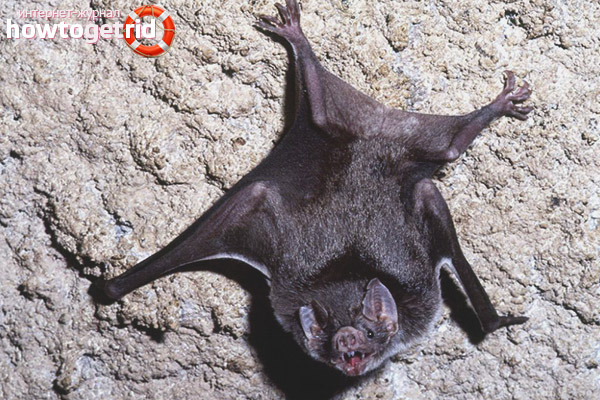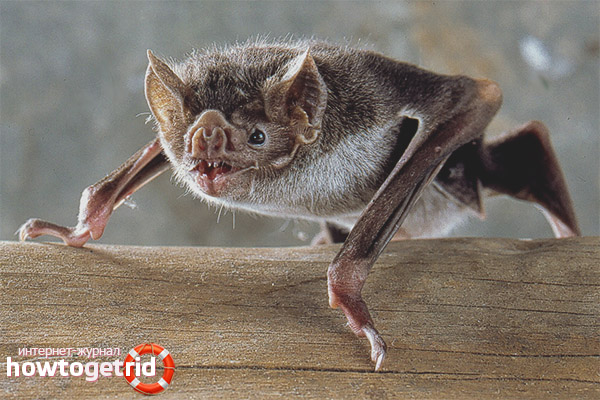The content of the article
There are many varieties of bats. One of the species is an ordinary vampire. These are bats with a body size of about 8 centimeters and a wingspan of 20 centimeters. They belong to the order of bats, the family is leaf-bearing. Speaking of vampires, many will associate with bloodthirsty monsters that feed on blood and hunt in the dark. Some comparisons, indeed, are not without meaning.
Description of appearance
An ordinary vampire is a nocturnal animal that lives and hunts in packs. On average, one colony can number a hundred, or even a thousand individuals.
The main difference from other bats that eat fruit is that an ordinary vampire eats blood. Desmoda can also be distinguished in appearance: the front of the head is short, conical, the nasal leaf is absent, the vampire has small ears and a tail. At the tip of the nose, an ordinary vampire has an infrared receptor, which makes it possible during hunting to recognize the most vulnerable places of the victim, where the skin is the thinnest and the access to blood is the easiest.
During the flight, the bat emits up to a dozen sound signals that are not audible to humans, but help the animal identify objects nearby. Among the other bats, ordinary vampires are distinguished by excellent vision, which helps to orient themselves on the terrain and space, complementing auditory abilities.
Another distinctive feature of an ordinary vampire will be the structure of the jaw, due to the lifestyle and source of nutrition of the animal. These are large front teeth that help dig into the victim’s skin, while the rest of the chewing teeth are much smaller than the rest of the bats.
An ordinary vampire has a large stomach that can stretch out and hold large portions of blood, but the intestines are shortened.
The fur of a vampire is golden, gray or brown. He is tough and short. The hind legs of the Desmod are very strong and muscular, this helps to silently move on the ground, jump and quickly move in order to catch the victim by surprise. The wings of an ordinary vampire do not differ from the wings of other representatives of related species and consist of palms, forearms, shoulders with stretched flying membranes.
Breeding
The lifespan of ordinary vampires is approximately 18 years. At the same time, captivity for bats shortens life to 10-12 years.
Habitat
An ordinary vampire inhabits the territories of South and Central America. Desmod's favorite climate is subtropical and tropical.
During the day, ordinary vampires prefer to sleep in caves, on the roofs and attics of houses, in gorges or old tree hollows. At the same time, they hang head down and take their place, focusing on their social position.The upper tiers belong to the dominant males; they can easily drive out individuals lower in the hierarchy. Like other animal representatives, bats are constantly fighting among themselves for a higher place. Some individuals do not withstand physical and moral humiliation, and begin to lead an independent lifestyle, leaving the colony.
Ordinary vampires hunt in packs, preferring open areas to forests. So bats are easier to navigate in space and scan surrounding objects.
Lifestyle

It is believed that ordinary vampires prefer to drink human blood. But in fact, human blood is far from the preferences of these animals. They hunt domestic animals, wild birds in the dark, and monkeys, eared seals, and tapirs can also become their victims. Of course, a person is not immune from the attack of an ordinary vampire. The required dose of blood, which desmod drinks overnight, is 20 milliliters.
Bats have a specific area of the brain that is responsible for processing sounds. This ability allows an ordinary vampire to distinguish when an animal sleeps on even and calm breathing in order to provide itself with a staple food - blood.
Bats have the ability to move silently both in the air and on the ground. They quietly sneak up on a sleeping victim and try to find vulnerabilities on their backs. These bats are so adapted to such a way of life that a bitten animal may not even be aware of everything that is happening. The bloodsucker can eat for more than half an hour, after which he returns to the cave or to the attic of the house where the entire colony lives. When bitten, an ordinary vampire leaves an active anticoagulant in the wound, which is contained in saliva and prevents blood clotting for several hours. Thus, the bat can return to the victim and repeat the meal.
Why are vampires dangerous?
People came up with a way out, injecting cattle with a substance that, when bitten, will enter the vampire's saliva and prevent it from clotting. Thus, the bat begins to bleed internally. Such substances can be rubbed into the caught bats, which, returning to the flock, will spread the chemical to other individuals.
How useful is an ordinary vampire
Despite the fact that vampires, like other bats, are carriers of diseases, people have learned to benefit from them. So, scientists invented a cure for blood coagulation. It was previously mentioned that the vampire's saliva contains an anticoagulant that helps to cause long bleeding in the victim. This component helps sick people with impaired circulation of the brain. Desmoteplase is the prevention of strokes, helps to thin the blood of a person and helps dissolve blood clots, while not having a negative impact on the general circulatory system.










Submit